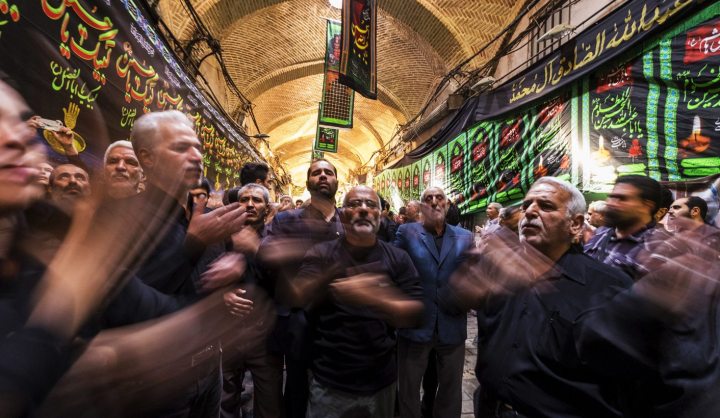World
Iran (and Cuba), Axis of Evil no more

With developments moving forward in a still-tentative Western-Iran rapprochement, J. BROOKS SPECTOR pauses to look at this effort in tandem with the reestablishment of US-Cuban relations late last year.
When the final tally is drawn up, and the Obama administration moves off the daily front pages and on into history books, it is distinctly possible that its most important developments in its foreign policy efforts will be the historic reengagement with Cuba and now, most recently, the multi-party nuclear agreement breakthrough with Iran. Surprisingly, perhaps, given the president’s initial orientation as he came into office, Barack Obama’s policies towards Afghanistan, Iraq, and Syria may well end up being the unfulfilled possibilities of US military disengagement from those nations, and the development of more inclusive, more democratic and more peaceful regimes in those three unhappy spaces.
What both the Cuban re-engagement and the events surrounding the Iranian agreement point to clearly is the real power of diplomacy when it takes advantage of the deeper political and economic lay of the land. In the case of Cuba, three factors encouraged movement, in contrast to a continuation of the increasingly outmoded, frozen stasis of a half century.
The first reason was that polling data has demonstrated that America’s population as a whole felt it was time for a change – including a sizeable chunk of the Cuban-American population in the country – contrary to the conventional wisdom on this point. As a result, maintaining the cordon around Cuba would not be a politically successful approach. Second was the growing interest in building ties to that ancestral motherland on the part of an increasing body of younger Cuban-Americans – especially younger business figures. And third was the simple fact that business as a whole – and especially agro-business in Florida and thereabouts – was increasingly eager to get into a market that was closed to it, but for which they could be thoroughly cost competitive against others. Looking more broadly in the region, it was also becoming clear that a so-called radical Bolivarian revolution with Cuba and Venezuela in the lead was no longer the inevitable wave of the future for Latin America – especially as Venezuelan oil revenues have started to dry up.
All of this was increasingly being matched by an interest on the part of a growing number of Cubans to find easier ways to gain access to funds, to travel to the US, to find connections there – and to build relationships with potential supporters for the democratisation of that island nation. The old revolutionary ardour was largely history and people in Cuba – like people everywhere – want a better life, materially as well as within the socio-political system they inhabit. As a result, the US-Cuban deal was struck, with a bit of adroit diplomatic help from unlikely places like the Vatican City, and even following some cooperative efforts to combat Ebola in West Africa. Of course the resumption of relations has not meant, so far at least, that many congressionally imposed embargo terms have automatically disappeared. That will still take time, and perhaps a Democratic majority in at least one house of the US Congress, before it can occur.
With Iran, following the 1979 Iranian revolution, the hurried departure of the Shah, the violent occupation of the US embassy, and the hostage taking of embassy staff there, the usurpation of the student movement by religious conservatives, any possible US-Iranian relations have been in a deep freeze for more than three decades. Moreover, following the revolution in Iran, there has been a bitter Iraqi-Iranian war (with the US as a kind of not-quite-so-quiet cheerleader for the Iraqis), the collapse of Saddam Hussein’s Iraq in a US-led invasion, the subsequent rise of Shia-Sunni hostilities that have overlapped political antagonisms, support of Hezbollah by Iran in Lebanon and elsewhere, and the development of intermediate range ballistic missiles by Iran and its concurrent push to achieve a nuclear weapon, along with Iran’s rhetorical, if not necessarily achievable, threats to destroy America’s ally, Israel).
The sum of these developments contributed to a constant state of antagonism between the US (along with most of the West) and Iran – and the consequent imposition of economic sanctions in the wake of Iran’s nuclear ambitions. But more recently, at first gradually – and then more visibly over the past six months, the coming together of Iranian and Western positions has become something of a fact on the ground.
The very first twinges of this realignment reach right back to the Arab Spring of late 2010. This vast, but sometimes inchoate movement challenged sclerotic, corrupt leadership throughout the region – beginning with the suicide of a fruit and vegetable seller in Tunisia. Together with a near-collapse of civil order in Iraq in the civil war that itself had followed the US invasion there, a Sunni-led, fanatical ISIS has further broken apart a familiar Middle East landscape. This, ultimately, at least in the fighting in Syria and Iraq, began to put Iran and America in a kind of very quiet, tacit anti-ISIS alliance – even if the US and Iran are not lined up together over the fighting in Yemen. While Iran’s Green Revolution did not succeed in the midst of the Arab Spring, it did give an impetus to the election of Hassan Rouhani as the country’s secular leader. And that had built on growing demands by the nation’s younger generations for economic and political reforms – and better access to the world’s goods and services.
Given all of this movement, a deal that could restrict Iran’s weaponised nuclear ambitions became possible, especially as it could build bridges to Western nations politically. Such a deal would achieve an easier market for Iranian oil, would open up the possibilities for the foreign investment needed to rebuild the Iranian petroleum industry – and, most crucially, would roll back a whole range of economic and financial sanctions against Iran. Moreover, it would provide for new investment in the rest of the economy and it would release significant portions of an estimated $100 billion in Iranian funds now frozen in Western financial institutions. Not all of that money will immediately be available for Iranian investment or other spending for import support. A chunk of it will be used to satisfy claimants for damages or losses suffered by others at the hand of Iranian actors. The Iranian government has been particularly eager to achieve this release of funding so that President Rouhani could point to these results as proof of the ability of his government to achieve real economic successes, especially since Iranian legislative elections are right around the corner at the end of next month.
Still, while there are still some significant critics of the Iranian nuclear deal (including many US Republican politicians – especially those running for the presidential nomination – and the Israeli government), the P5+1 (the US, UK, Germany, France, China, and Russia) grouping had negotiated hard with the Iranians in Switzerland. The negotiations ultimately went into a kind of overtime before the negotiators finally reached agreement.
Ultimately, the positive result for the whole process was in the hands of the International Atomic Energy Agency, the IAEA, to verify that the Iranians had, in fact, complied with the initial requirements. These have included, among other things, transferring enriched uranium to neutral holding areas in Russia and Kazakhstan, providing access for inspections of Iranian facilities, and the decommissioning of a breeder reactor and thousands of centrifuges needed to separate the isotope of uranium needed for weaponisation. Once the IAEA announced its positive findings, steps were almost immediately on the go to release frozen Iranian funds.
In fact, there were reasons to fear that at the last moment the deal would come unstuck. When the crews of two US naval patrol boats were taken prisoner by Iran’s Revolutionary Guards after they had drifted into Iranian waters in the Persian Gulf, had there been any prolonged captivity or exploitation of this event, the political pressures on President Obama might well have provoked some last minute rethinking in Washington over the nuclear accord. Fortunately, the Iranian government responded quickly and released the crews after only a few days, announcing that the intrusion had not been a provocation or an attempt at espionage. This should probably be read as a positive sign that the Iranians really wanted the deal to succeed.
Moreover, while it was not a formal part of the nuclear negotiations, the Iranians also agreed to release a group of four American citizens who had been incarcerated in Iranian jails on various charges. Similarly, the Americans released seven Iranians from detention for sanctions violations, and the US has also announced the rollback of some economic sanctions as part of the nuclear accord as well as the release of some funds held since American officials had been taken captive back in 1979.
Simultaneously, it did put into place other limited sanctions on a number of Iranian citizens and companies for violating United Nations resolutions against recent ballistic missile tests, a move that took place less than 24 hours after the White House had lifted those broader sanctions as part of the nuclear agreement. The quick release of the US military personnel and the four Americans in Iranian prisons clearly took some of the wind out of the sails of GOP presidential hopefuls who were clearly looking for a way of pointing to this agreement and the capture of US military personnel as signs of weakness on the part of the Obama administration.
There are still, obviously, various ways this still-evolving, tentative relationship can come unstuck. Iran’s Ayatollah Ali Khamenei (or even elements of the Revolutionary Guard) could still try to find ways to scupper the accord and/or the creeping rapprochement with the US and the rest of the signatories to the accord. On the other hand, a Republican victory in the 2016 US presidential election or an enhanced GOP caucus in the Senate could potentially put a spanner in the works from the American side – imposing new conditions on funds releases or the constant questioning of the inspections carried out by the IAEA as a justification for pulling out of the agreement.
To this writer at least, it seems unlikely the US would acquiesce to Israeli criticism regarding the agreement, if for no other reason than that the stakes are much higher for Americans than offending the sensibilities of Prime Minister Binyamin Netanyahu’s vehement disagreement with the deal. In reality, US security guarantees towards Israel are too strong and too deep for that and they will transcend the obvious bad vibe between the two presidents. Something of the same thing would be true for Saudi Arabian or other Gulf states’ criticisms of the accord and what it means, because the US can argue that their security circumstances are more likely to be supported with restraints on Iranian nuclear ambitions, even if these are imperfect, rather than allowing a more dangerous future under the status quo ante – i.e., one without any agreement in place.
Finally, of course, the fate of petroleum industry may be the joker in this deck. As world petroleum prices potentially head downwards towards $20 per barrel, the Saudis and others are becoming increasingly desperate to keep pumping oil in order to generate revenue, and as the per barrel price drops as global supply builds up further. Now that Iran can send petroleum into the global market as well (especially as it industry is renovated), this will put yet further downward pressures on oil prices. The pricing may well disappoint the Iranians in terms of the actual revenues they can hope to achieve, however. Of course the Russians and other non-Middle East oil-exporting states will have similar problems and pressures so the oil market’s future possibilities can cut many ways.
While the world is now in the earliest days of the success of the Iranian deal, it is just possible to see the outlines of some increased stability in the broader Middle East. What this ultimately means for the rest of the dangerous territory in that region remains unclear. But, at a minimum, together with the restoration of US-Cuban relations, it does say conflict does not necessarily have to be the permanent order of things. And that diplomacy can achieve real things. DM
Photo: Shi’ite Muslims beat themselves during a religious festival marking Ashura, in Tehran’s grand bazaar October 24, 2015. Ashura, which falls on the 10th day of the Islamic month of Muharram, commemorates the death of Imam Hussein, grandson of Prophet Mohammad, who was killed in the 7th century battle of Kerbala. REUTERS/Raheb Homavandi/TIMA.



















 Become an Insider
Become an Insider